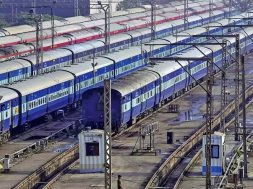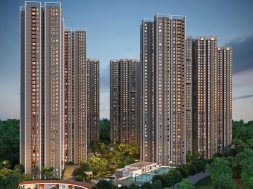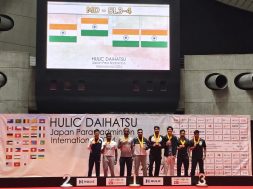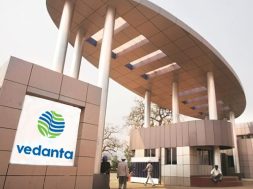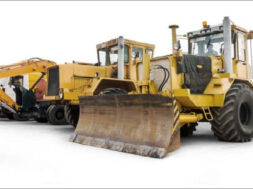India doesn’t have any history of skyscrapers. There hasn’t been any demand for it in the past, as high-rise apartment buildings were costly to build and expensive to buy. There are also fundamental challenges because of the high seismicity. So, what we are seeing now is developers pushing the boundaries to go higher and higher. A lot of skyscraper records are going to be broken, says Dr Hossein Rezai-Jorabi, Group Director of Web Structures.
India’s growing economic strength is fuelling a new demand for high-rise apartments in cities across the country. As a result, the country’s skylines are changing rapidly and the builders are actively venturing into this market segment, setting new records.
There are currently 82 tall building projects under construction in India, including World One, the tallest residential tower in the world.
However, with the increase in demand for high-rise apartments, come engineering challenges. Many cities in India are situated in zones prone to earthquake and cyclone and building skyscrapers that withstand extreme conditions requires technical, specialised engineering solutions.
More than half of India is situated in high seismic zones, including the country’s capital. That is the challenge facing developers, architects and earthquake engineers and that is why standards and codes are so strict.
Developers across India are now looking to Web Structures, to help turn their plans into reality, because of its engineering expertise in helping to create tall buildings in earthquake zones and its record of successfully delivering complex design projects.
International design engineer Web Structures is working on three major contracts, with leading Indian real estate developers, to create the tallest residential skyscrapers in Pune and Kolkata as the country’s demand for high-rise apartment continues to soar.
The three deals are a first in India for the civil, structural and geotechnical engineering firm, which works in partnership with leading international architects, including Foster + Partners, Kohn Pederson Fox (KPF) and Conran & Partners, to create iconic buildings across the world. Its team has also played a role in the Freedom Towers project in New York.
Dr Hossein Rezai-Jorabi, Web Structures’ group director, leads a team whose research work on earthquake and seismic design of structures in Malaysia, after the tsunami-causing earthquake of December 2004, has been highly acclaimed. It is that knowledge that is proving so valuable to developers in India.
He says, “India doesn’t have any history of skyscrapers. There hasn’t been any demand for it in the past, as high-rise apartment buildings were costly to build and expensive to buy. There are also fundamental challenges because of the high seismicity. So what we are seeing now is developers pushing the boundaries, to go higher and higher. A lot of skyscraper records are going to be broken.”
“Our experience and expertise in complex design projects and our work in earthquake engineering is becoming widely recognised in India and we will be making telling contributions to the successful delivery of what will be truly iconic buildings,” he adds.
Web Structures’ experience and understanding also helps to provide solutions which test the boundaries of existing work practices.
Dr Rezai-Jorabi says, “Structural engineering can offer dynamic and varied solutions to the challenges faced by architects and engineers. The design processes we have developed over the years lead to unique structural systems that are tailor-made for each and every project. These are totally cost-efficient. This is what we are now bringing to India.”
“Primary structural challenges in India are related to seismic and high wind speed phenomena. Both can be overcome, but require the development of techniques which are indigenously available but need application to taller and more sophisticated structures.
“Ensuring that the specified products are used in the intended manner is also a concern and consideration, when it comes to tall building projects in this part of the world.” he adds.
Seismic risk, the development’s soil conditions and the structural characteristics of the building, in terms of resistance against lateral loads, have all to be considered.
The Indian subcontinent is known for its high frequency and intensity of earthquakes and has a history of devastating earthquakes, such as the Bhuj earthquake in 2001. Northern India is particularly prone to seismic tremors.
Reference earthquakes are chosen for each project site and used as time history load cases in the structural analysis for the building. Two of them are chosen from the earthquakes within and nearby the India region, normally Bhuj and the India-Bangladesh border 1988 earthquakes.
The third one used is the El Centro, 1940 earthquake in California, which has for years been seen as a good reference for ground motions and accelerations arising from seismic activities.
Web Structures has been called in on an ambitious project for developer Ireo, to create North India’s highest tower – a 50-storeyed skyscraper at Victory Valley in Gurgaon, part of the National Capital Region (NCR).
Three towers form the residential centrepiece of a total gross 2,000,000 sq ft floor area on the development. At a height of 168.3m from the ground level, the main tower will be the tallest building, in the region. The current tallest structure is Civic Centre, which is 112m in height, with 28 storeys.
Dr Rezai-Jorabi explains the challenges faced in the Victory Valley project. He says: “One of the challenges in creating tall buildings is the design of its lateral load resisting system.
For a small building, the critical parameter is only gravity loads in normal circumstances. However, as the building gets taller, it starts to catch more wind loads. Moreover, in high seismicity areas, the building’s stability under seismic ground motion becomes very critical, especially in India, which has high seismicity activities.
To build a 50-storeyed building in Delhi requires profound understanding of seismic behaviour and detailing, to comply with the local seismic codes which are very strict.
“The higher a building, the more wind and seismic loads it has to resist, particularly in regard to seismic loads. Victory Valley is located in Zone 4, the second highest zone in Indian seismic zoning. As part of our Victory Valley work, time history analyses have been performed for the seismic design of the tower,” Dr Rezai-Jorabi adds.
The building also has three-storey, high lobby areas in the north and south wings. In this regard, a series of studies and analysis have also been carried out, which proved extremely useful, when coordinating with the architect.
There are also challenges arising from the architectural design intent. Eight study series have been performed, since January 2010 in order for the project to get the most optimised structural system.
The study conducted by Web Structures developed, as the team progressed further into more detailed design stages.
Apart from Victory Valley, Web Structures is also currently working on a 30-storeyed luxury apartment in Pune for the property developer Marvel Realtors. It will be the highest tower in the city, which is also in zone 4, the second highest in the Indian earthquake scale.
Also, it has been called in by local developer Forum Projects to work on plans for two 39-storeyed towers – in West Bengal, in the city of Kolkata – linked by an amazing three-storeyed bridge, with a jogging track and swimming pool, in the sky.
Kolkata is in zone 3 and faces a very high damage risk from winds and cyclones – also major considerations for design engineering skyscrapers.
Dr Rezai-Jorabi says: “In addition to seismic activity, Kolkata experiences some of the strongest winds in India. Wind speeds of up to 50m/s are prevalent along the west coast and structures must be designed, to deal with these.”
Web Structures has engineered more than 52 residential buildings and mixed-use skyscrapers around the world in the past 15 years but these are its first work on tall buildings in India. In the past six months it has won three major contracts, with more in the pipeline.
Dr Rezai-Jorabi says: “We see India as a growing market for our skills in helping developers and architects design exceptional buildings in areas where we have to overcome extreme engineering challenges, such as earthquake zones.
Right now, “India’s economy is one of the fastest-growing in the world. Its real estate sector has now reached the point where tall buildings, such as the ones we specialise in, are becoming desirable, financially viable and realisable”.
Web Structures’ high-quality design engineering places the practice and its talented team of professionals in the “premier league” of international engineers, demonstrating an in-depth knowledge that continues to stretch the boundaries of existing engineering work practices.
Web Structures, which has offices in Singapore, Kuala Lumpur, Shanghai and London, is a pioneer of fusion engineering, using cost efficiencies to redefine engineering excellence through innovation and design and enabling ground-breaking architecture to become building reality.
Dr Rezai-Jorabi explains: “Research-based design techniques and processes developed by Web Structuress question existing practices and apply structural analyses and design principles, in a holistic and all-embracing manner.”
Web Structures’ diverse portfolio includes work on award-winning suspension bridges, luxury resort hotels, residential skyscrapers and complex commercial and industrial projects.
Since its creation, Web Structures has worked on more than 350 projects in more than 24 countries, continually building on its reputation in the industry. It has also won numerous international awards.
Its current and recent projects include a new Hilton Hotel in Mongolia; Kuala Lumpur’s landmark, luxury residential development Troika, Headquarters of Tokio Marine in Singapore and the highly-acclaimed Four Seasons resort in Seychelles. It is also involved in engineering design work in Malaysia, Thailand and Vietnam, etc.
6
Cookie Consent
We use cookies to personalize your experience. By continuing to visit this website you agree to our Terms & Conditions, Privacy Policy and Cookie Policy.
